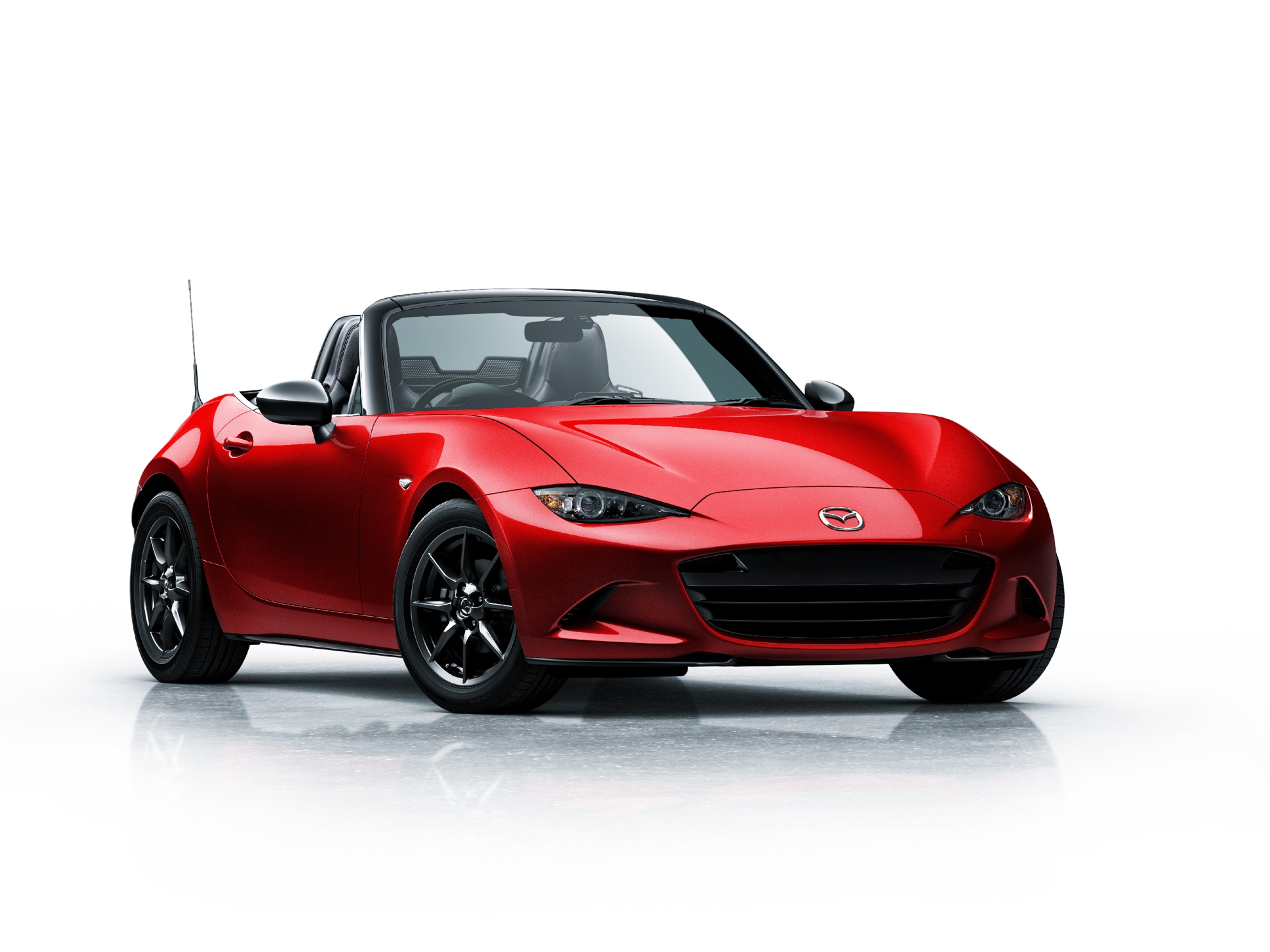Twenty-Five Years of Challenge: Engineering Devoted to Taking Our Original Aims into the Future
This February marked the 25th anniversary of the debut of the Mazda MX-5 Roadster. Originally pioneered by European car makers, this fun-to-drive lightweight sports car has matured and evolved over the last quarter century.
Right from the first generation, Mazda’s philosophy for the MX-5’s development has remained the same: create a car that delivers true driving pleasure and is an irreplaceable partner for the people on board as well as onlookers – brightening and cheering their mood. This includes Mazda’s hallmark ‘Jinba Ittai,’ the feeling of oneness between car and driver, and the ‘Lots of Fun’ characteristics that go beyond driving pleasure.
These two themes have been unchanging watchwords guiding the MX-5’s development as Mazda continued to enhance the model’s driving pleasure while meeting increasingly pressing social demands for comfort, safety and environmental performance.
The MX-5 has steadily evolved in a way that is only possible thanks to an unchanging passion shared between Mazda and countless MX-5 owners and fans around the world.
‘Innovate in order to preserve the ideal’ – This is our duty as the developer, and at the same time it’s an exciting dream, a source of happiness, and something we are proud of. We are ready for the challenges of the next quarter century and beyond, always inspired by the passion of our fans around the world.
Jinba Ittai -the essential attribute
On February 9, 1989 Mazda announced its two-seat open-top lightweight sports car, the MX-5 Roadster at the Chicago Auto Show. At that time, there were virtually no cars remaining in the category that had first appeared in Europe in the latter half of the 1940s, gaining popularity thanks to its agile handling, characteristic style and affordability. After the 1960s the market focused more on safety and comfort and the cars in this category had all but disappeared.
For this reason, the debut of the MX-5 was a great sensation. Causing a sensation was not the aim of the engineers and designers at Mazda who produced the first-generation model. Their aim was simply to bring back a fun-to-drive lightweight sports car for people like themselves—people who just love cars and love to drive. In order to create a truly enjoyable car, the engineers and designers adopted ‘Jinba Ittai’ (the oneness between car and driver) and ‘a car that appeals to human sensitivity’ as the key development concepts. Following the example of famous European cars of the 1960s, they set the principal requirements for Mazda’s new sports car: lightweight, a compact open-top two-seater body with a front-midship-engine rear-wheel-drive configuration, a 50:50 front-rear weight distribution, a low yaw inertia moment and an affordable price.
With its layout dictated by these principal requirements and its weight pared to the minimum, the first-generation MX-5 was given a powertrain focused on smooth, linear accelerator response rather than raw power. This resulted in the exhilarating direct handling and superb control via the throttle so characteristic of Jinba Ittai.
The first generation model brought the pleasure of a traditional lightweight sports car, as experienced in an open-top two-seater cockpit, to the modern age. As the MX-5 won awards in the US, Australia, Germany, the UK and Japan and gained widespread popularity, fan clubs big and small began to spring up worldwide.
A second-generation model was announced at the Tokyo Motor Show in October 1997 and was certified by the Guinness World Records as the world’s ‘best-selling two-seat roadster’ when production reached 531,890 units in May 2000. The third-generation model was announced at the Geneva Motor Show in February 2005. Production reached 900,000 units in February 2011, which lead to an update of its Guinness certification. Both the second and the third generation models inherited the MX-5’s basic principles, but simply maintaining those principals was not enough to meet people’s changing expectations. Adopting the latest technology and flexible thinking was essential to enhance driving performance and the fun elements of ownership that include eye-catching styling, while meeting ever more demanding requirements for safety, environmental performance and comfort.
Jinba Ittai driving has evolved and improved as technology advanced. It is an essential part of all the cars Mazda makes. The 25-year history of the Mazda MX-5 is the history of the pursuit of a unique driving feel in which the car and driver become one. It is also a record of the distance Mazda has traveled to establish its own inimitable style of driving pleasure.
